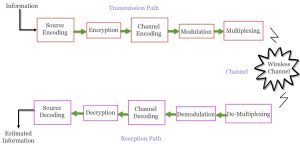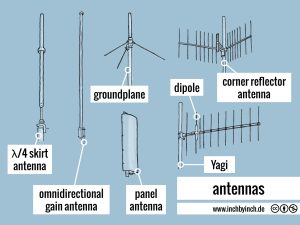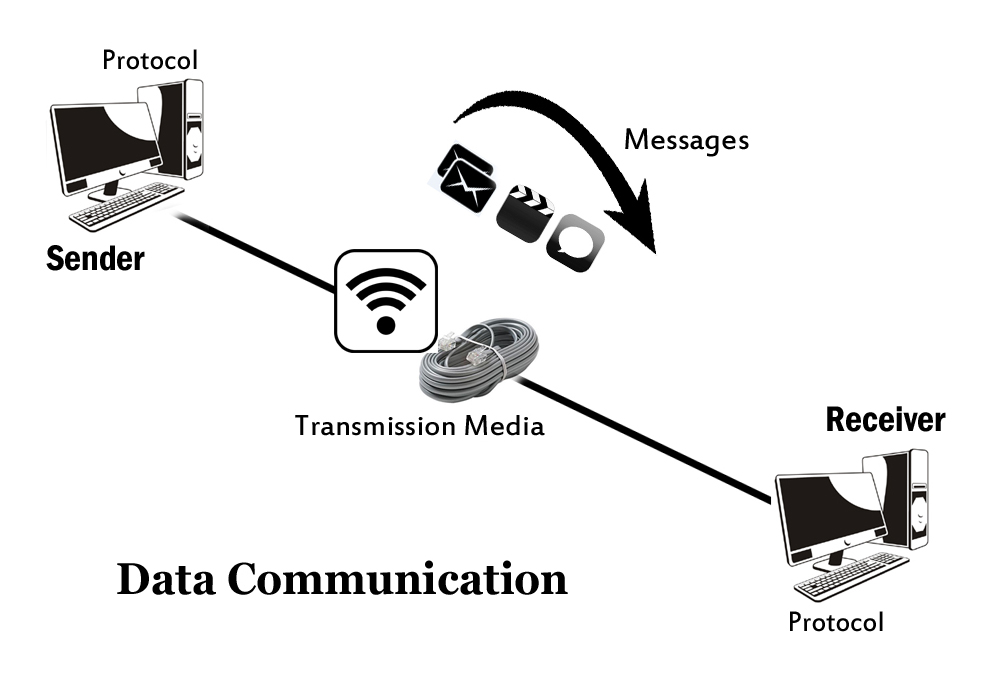The efficacy of wireless communication systems is hinged on the successful transmission of signals from a transmitter to a receiver. Nonetheless, various factors such as fading and interference can disrupt this process, leading to suboptimal results. Transmit diversity techniques offer a possible solution to address these issues.

Antennas are pivotal in wireless transmission since they facilitate signal transmission and reception. By utilizing multiple antennas, the transmitter can release several versions of the same signal at different angles or frequencies, thereby improving reception quality and mitigating fade.
Furthermore, using several antennas allows for improved diversity gain – an increase in signal strength resulting from combining signals from diverse sources. Channel coding further enhances this effect by adding redundancy to transmitted data that helps correct errors caused by fading or interference.
IEEE standards have widely adopted frequency diversity and time diversity as two types of transmit diversity techniques. Frequency diversity involves sending out copies of data over different frequencies simultaneously while time diversity sends out copies at different times with slight delays between them.
In conclusion, implementing transmit diversity techniques involving antenna usage and channel coding is crucial in combating issues like fading and interference in wireless communication systems effectively. With multiple antennas deployed alongside diverse strategies such as frequency or time diversities coupled with channel code implementation helps achieve better outcomes while minimizing loss during transmissions – thus enhancing overall system efficiency significantly!
The Role of Antennas in Transmission and Fade Mitigation
Contents
- 1 The Role of Antennas in Transmission and Fade Mitigation
- 2 Transmit Diversity Techniques for Improving Communication Quality
- 3 The Benefits and Limitations of Using Multiple Antennas
- 4 Channel Coding and Diversity Gain in Wireless Transmission
- 5 Using Space Diversity to Combat Interference and Fading Channels
- 6 Time and Frequency Diversity: Which is More Bandwidth Efficient?
- 7 The Future of Transmit Diversity: Advances in Coding and Decoding Techniques
- 7.1 What exactly is transmit diversity and how does it enhance wireless communication systems?
- 7.2 How do antennas factor into transmit diversity?
- 7.3 Can you describe some specific techniques for improving communication quality using transmit diversity?
- 7.4 Are there any drawbacks associated with utilizing several antennas for wireless communication purposes?
- 7.5 Could you explain how channel coding/diversity gain contribute towards enhancing wireless transmission?
- 7.6 How does space diversity combat interference and fading channels?
- 7.7 Which between time/frequency diversities is more bandwidth efficient?
- 7.8 Are there any upcoming advancements in coding and decoding techniques that’ll improve transmit diversity performance?
The intricate world of wireless communication systems relies heavily on the use of antennas. These devices serve as the crucial link between transmitter and receiver, enabling signals to be transmitted and received with ease. To enhance communication quality, numerous techniques have been introduced such as multiple transmit antennas – also known as transmitter diversity technique.

One such technique that has gained traction is space diversity; where two or more separate antennas are positioned in different locations to combat interference and fading caused by obstacles like buildings or mountains. By distributing signal power over a larger area via space diversity, system performance can be significantly improved while minimizing signal loss due to fading.
Coding is another popular transmit diversity technique used in wireless communication systems for error protection during transmission. Block codes are commonly employed to guarantee data integrity whilst minimizing bit error rates (BER). When combined with frequency or time diversity, coding can further boost system performance without compromising bandwidth efficiency.
In conclusion, the importance of antennas cannot be overstated when it comes to mitigating fade in wireless transmission. Adapting multiple antenna transmitting techniques like space diversity or coding with either frequency or time provides an effective means for enhancing overall system reliability while preserving precious bandwidth resources. Given how rapidly technology progresses these days, we may see even more sophisticated approaches emerge soon enough!
Transmit Diversity Techniques for Improving Communication Quality
The enigmatic realm of wireless communication systems is fraught with challenges, but transmit diversity techniques offer a glimmer of hope. One such technique, Multiple Input Multiple Output (MIMO) – which entails using multiple antennas- has emerged as a pivotal aspect in enhancing the quality of communication transmission. By transmitting data simultaneously via two or more antennas, signal strength improves significantly and fading takes a back seat.
Channel coding is another vital tool that can be harnessed for improving transmit diversity. Adding redundancy to transmitted data enables error correction at the receiver’s end and guarantees enhanced transmission reliability while reducing packet loss.
Frequency diversity adds yet another layer of complexity to this already mind-boggling subject matter by utilizing different frequencies for transmitting data over distinct paths. This ingenious technique ensures that frequency selective fading becomes a thing of the past thereby guaranteeing exceptional signal quality at the receiving end.
One cannot deny that these transmit diversity techniques have become indispensable in ensuring seamless communication between transmitters and receivers despite interference issues or fading channels. As technology advances by leaps and bounds, organizations like IEEE continue to innovate ways through which signals are encoded and decoded for optimal performance- leaving us wondering what perplexing discoveries lie ahead!
The Benefits and Limitations of Using Multiple Antennas
The utilization of multiple antennas within mobile communication systems has been known to provide a plethora of benefits. The most prominent advantage being antenna diversity, which serves as an antidote for the effects caused by fading channels and interference that plague wireless networks. With two or more transmit antennas in use, spatial diversity can be attained – leading to amplified signal quality and heightened reliability.
Aside from this already impressive feat, the introduction of numerous antennas also grants access to advanced modulation schemes such as space-time block coding (STBC). STBC works wonders by encoding data across several transmit antennas; substantially improving both spectral efficiency and error rate performance. Particularly beneficial in Rayleigh fading environments where signals are at the mercy of random fluctuations.
However, one must tread with caution when implementing multiple antennas within wireless communication systems due to limitations that arise with their usage. In particular, increasing the number of transmit antennas leads to higher power consumption and complexity on either end of the link. On top of this, adaptive detection algorithms may become necessary for optimal decoding performance when dealing with larger antenna arrays or complex channel codes like block codes.
Despite these challenges presented when utilizing multiple antennas within wireless communication systems, it is vital we do not overlook their benefits. Techniques like space diversity and STBC have proven time after time they significantly enhance system performance through mitigation against interference and combating fading channels. As technology continues its rapid advancement within this field, we can expect further improvements via enhancements in coding/decoding techniques that make better use out of these potent tools.
Channel Coding and Diversity Gain in Wireless Transmission
The improvement of wireless transmission quality is hinged on the perplexing and bursty techniques employed in channel coding and diversity gain. Code division multiple access (CDMA) utilizes channel coding to counteract interference caused by other users sharing the same frequency band. In addition, CDMA employs diverse schemes such as time or frequency diversity to combat fading channels.
Spatial diversity combining, another popular method used to enhance wireless transmission, involves transmitting identical information using multiple antennas at the transmitter before combining them at the receiver with a decoder. Space-time block codes constitute an essential class of spatial diversity techniques that leverage symbol constellations for data encoding.
Information theory provides a theoretical framework for understanding how much can be achieved through various forms of transmit diversity. MIMO systems are known to offer significant gains over single antenna systems, especially when combined with appropriate space-time codes and decoding algorithms. Concatenating different types of transmit diversities can further boost performance in challenging environments where both multipath fading and interference coexist – truly perplexing!
Using Space Diversity to Combat Interference and Fading Channels
The perplexing and bursty realm of wireless communication has stumbled upon a noteworthy solution: space diversity. This tactic employs several transmitter antennas to emit the same signal, which is then caught by multiple receiver antennas. The outcome? A heightened signal quality that can be optimally decoded using maximum likelihood decoding.
What’s more, this technique packs a punch in terms of boosting transmission capacity without sacrificing bandwidth efficiency. In order to improve error correction rates, convolutional codes and coded modulation are paired with iterative decoding techniques – yielding results that surpass traditional siso (single input single output) methods.
But wait, there’s more! To combat the pesky effects of fading channels, interleaving techniques come into play – dispersing errors over time instead of all at once. And for those looking for an extra layer of reliability? Hybrid automatic repeat request (HARQ) protocols have been developed based on channel feedback from both ends, further strengthening signaling security. As recent research presented at the IEEE International Conference on Communications suggests, these tactics could revolutionize cellular mobile radio applications where interference runs rampant.
Time and Frequency Diversity: Which is More Bandwidth Efficient?
The perplexing world of wireless communication systems is home to a plethora of techniques aimed at refining the quality of digital data transmission. Among these, time and frequency diversity stand out as two shining stars, each with their own unique approach towards optimization. Time diversity opts for transmitting signals using multiple antennas at varying times while frequency diversity chooses different frequencies for transmission.
But which technique reigns supreme in terms of bandwidth efficiency? The answer lies within the complex nature of maximum ratio combining (MRC), a frequently used frequency-diversity technique that demands high transmitted power due to its reliance on multiple antennas and channel knowledge. On the other hand, time-diversity schemes such as Space-Time Block Coding (STBC) proposed by Tarokh et al. and Calderbank et al., require less transmitted power and demonstrate greater adeptness in handling time-varying channels without requiring extensive knowledge.
Moreover, it appears that time-diversity schemes may hold an advantage over their frequency-based counterparts when it comes to CDMA mobile systems and local area networks (LANs). For instance, J.F Seshadri has shown that STBC can be effectively implemented with CDMA mobile systems without encroaching upon regulatory guidelines.
Thus, while both techniques have their benefits in enhancing wireless communication system quality, current research tends to lean towards favoring time-diversity schemes due to their superior bandwidth efficiency and impressive ability to navigate intricate channel environments.
The Future of Transmit Diversity: Advances in Coding and Decoding Techniques
The perplexing world of transmit diversity systems has been a hotbed of research, with coding and decoding techniques at the forefront. One technique involves using error-correcting codes that can detect and correct errors in received signals – mind-boggling! Another approach combines orthogonal codes with space-time coding to mitigate interference and improve communication quality – what sorcery is this?
But wait, there’s more! The use of memoryless codecs reduces computational requirements and allows for real-time applications – truly astonishing. And let us not forget about space-time block codes (STBC), which transmits multiple copies of data over different antennas simultaneously to combat fading channels while increasing throughput rates – simply awe-inspiring.
In conclusion, these advanced techniques are vital components in designing efficient transmit diversity systems that can handle complex channel conditions while providing reliable communication quality. With continued research efforts into developing new algorithms or optimizing existing ones using machine learning-based methods, we can expect even greater improvements on future wireless networks’ performances like never before! It’s enough to make one’s head spin with excitement.
What exactly is transmit diversity and how does it enhance wireless communication systems?
Transmit diversity refers to the deployment of multiple antennas to transmit the same information, thereby improving signal quality in wireless communication. This technique helps overcome common transmission obstacles such as fading and interference that can hamper data transfer.
How do antennas factor into transmit diversity?
Antennas are integral to transmitting and receiving signals in a wireless communication system. With respect to transmit diversity, multiple antennas are employed to retransmit identical information concurrently – this approach enhances signal quality.
Can you describe some specific techniques for improving communication quality using transmit diversity?
A few examples of techniques used in conjunction with transmit diversity include space, time, and frequency diversities. These methods leverage multiple antenna arrays or paths for enhanced transmission capabilities.
Are there any drawbacks associated with utilizing several antennas for wireless communication purposes?
Although deploying numerous antennas offers advantages like reduced fading/interference effects on transmissions and improved signal strength, it increases both complexity/costs associated with the system’s implementation.
Could you explain how channel coding/diversity gain contribute towards enhancing wireless transmission?
Channel coding introduces redundancy within transmitted data so that errors can be corrected at reception by encoding them appropriately. Diversity gain involves relaying an identical message through distinct antennae; this creates more chances for receivers to pick up the transmitted signal accurately.
How does space diversity combat interference and fading channels?
Space diversity employs various antennae situated at different positions but which receive an identical transmitted message simultaneously. By doing so, it overcomes issues related to fading/interference by providing additional pathways from which receivers may choose signals from.\n
Which between time/frequency diversities is more bandwidth efficient?
Time-diversity tends toward being more bandwidth-efficient compared with frequency-diversity because the former leverages different time slots to transmit identical information. Frequency diversity, on the other hand, increases required bandwidth for transmitting similar data over multiple frequencies.
Are there any upcoming advancements in coding and decoding techniques that’ll improve transmit diversity performance?
Yes – future advances will include more sophisticated error correction codes that use machine/deep learning algorithms. These novel approaches offer significant potential for enhancing wireless communication systems’ reliability/performance metrics.


